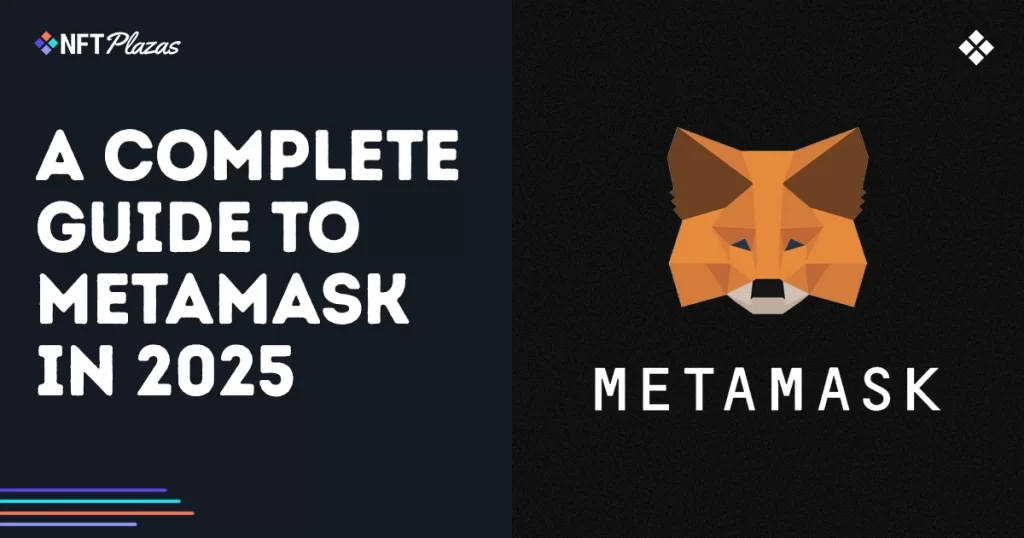Since its debut in 2016, a software wallet has stood at the top of the web3 industry due to its ease of use, forward-thinking approach, and continuous improvements in functionality and security.
That software wallet is called Metamask.
Many of the features, trends, and experiences common in software wallets today are due to MetaMask. The wallet went out of its way to cater to the needs of the blockchain community, so much so that it remains the most popular software wallet to this day. What is MetaMask, why is it still so popular, and what is its future?
Here’s our complete guide to MetaMask 2025.


What is MetaMask?
MetaMask is a free-to-use open source software wallet. It is available on desktop and mobile devices and allows users to store, send and receive blockchain-based cryptocurrencies and NFTs.
Developed by Consensys, MetaMask is an important tool between users and Web3, enabling users to own digital assets and interact with a variety of the most popular blockchain-based tools, websites and services.
The idea for the wallet came from Joseph Lubin, co-founder of the Ethereum blockchain, who realized that user-friendly software wallets were crucial to the development of blockchain technology.
MetaMask is a self-hosted wallet, which means users have full control over their private keys and thus truly own all tokens and assets they hold. This also enables the use of popular hardware wallets such as Ledger and Trezor.


One of MetaMask’s goals is to make interacting with the blockchain simple, straightforward, and user-friendly. To help achieve this goal, MetaMask supports multiple browsers, including Chrome, Firefox, Brave and Edge, allowing users to start using Web3 using the browser they are already familiar with.
This is critical to getting more users to participate in DeFi services like Uniswap, NFT collections like Bored Ape Yacht Club, and blockchain-based platforms like OpenSea.
MetaMask also features a suite of security features that add an extra layer of defense between a user’s wallet and the websites they visit. This helps prevent fraud, malicious code, and more, and Consensys is constantly pursuing security improvements to protect against the latest threats.
MetaMask wallet supports the Ethereum blockchain and all Ethereum Virtual Machine (EVM) compatible networks, such as BNB Chain, Polygon, and Avalanche. Recently, they launched Snaps, a new feature that allows connection to non-EVM blockchains such as Solana.


MetaMask History
The first public version of MetaMask was launched in 2016 with the goal of making it easier for Internet users to access Ethereum. Before MetaMask, software wallets were often difficult to use, meaning only true enthusiasts would use blockchain technology. MetaMask is the first software wallet to truly cater to a general audience.
In 2017, MetaMask saw significant user gains due to the boom in initial coin offerings (ICOs), with users enjoying its ease of use. The wallet continues to grow in popularity, and in 2020, MetaMask released its first mobile apps for iOS and Android devices, further helping to expand accessibility.
When NFTs exploded into the mainstream in 2021, MetaMask became the wallet of choice for earners around the world. As of August 2021, MetaMask reported over 10 million monthly active users, signaling its importance to the growing Web3 industry.
In 2023, Snaps were released to enable developers to extend the functionality of the wallet to non-EVM blockchains. In 2024, functionality is further developed with the debut of the MetaMask Card – a physical debit card developed in partnership with MasterCard and Baanx. This allows users to spend cryptocurrencies in their MetaMask wallet anywhere Mastercard is accepted without having to use an exchange first – greatly facilitating the daily use of cryptocurrencies.


What’s next for MetaMask?
As 2025 approaches, MetaMask continues to work on improving accessibility, user experience, and product quality.
First, they hope to provide greater multi-chain support. By supporting a wider range of blockchains, MetaMask aims to become a universal wallet for Web3 – allowing users to manage all digital assets from a single wallet.
In addition, MetaMask is focusing on the growing Layer 2 networking ecosystem. As networks like Optimism, Arbitrum, and Eclipse continue to grow, MetaMask hopes their users will benefit from the faster transaction speeds and lower fees these networks offer, making the blockchain even more attractive.


Security remains a top priority, with features such as biometric authentication, hardware wallet integration and phishing detection protecting users from the latest threats. To solve this problem, Consensys acquired the popular security service Wallet Guard in July 2024, enhancing MetaMask’s security capabilities.
Third-party developer support is also an important part of MetaMask’s future development. With millions of users around the world, there is a community of developers looking to enhance MetaMask’s existing features, and the team is leveraging features like Snap that encourage innovation and creativity to attract this motivated group of people.
In 8 years, MetaMask has become the preferred software wallet in the blockchain field. Its user-first design, ease of use, accessibility, and more have made it the tool of choice for blockchain veterans and newbies around the world, and has played an important role in growing Web3 to where it is today.
There are many challengers on the market now – Phantom, Xverse and Rainbow to name a few – although none have yet been able to challenge MetaMask’s crown. MetaMask is the benchmark against which all other software wallets are measured – and currently, no one is even close to their standards.

